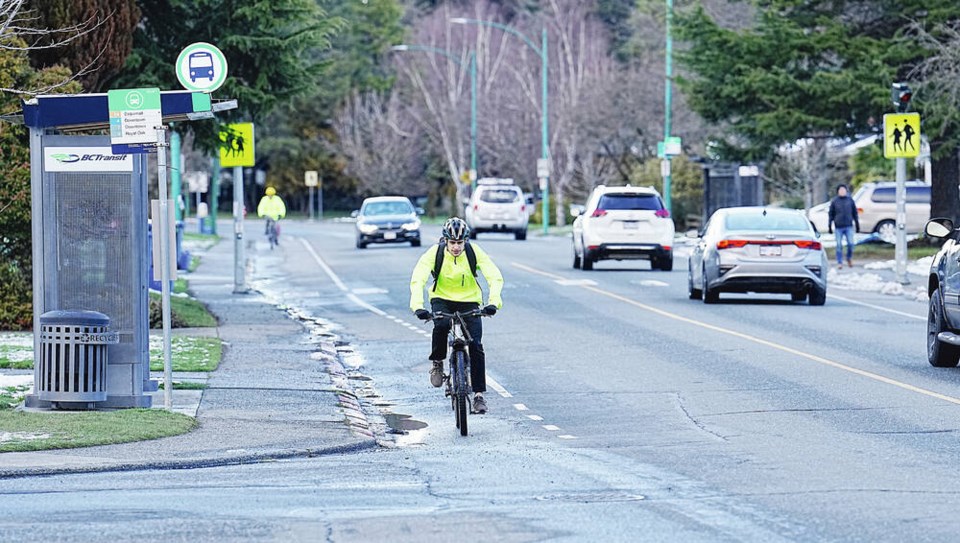Last week I had the best possible example of why shoulder checking is one of the most important things you can do on the road. Unfortunately for me I was the victim in the example.
Not far from home, I was driving on a moderately busy road with residences on one side and business on the other. I’ve driven it hundreds of times. You have to be alert along this small stretch, especially during the week, because of a playground nearby that is quickly followed by some commercial driveways. But it’s nothing special or particularly challenging — until the other day.
I passed a row of parked cars on my right and was just starting to pass by a Ford F-150 when it pulled out from the curb and drove off. I was forced into the oncoming lane to avoid a certain crash. Thankfully, there wasn’t anything heading in the other direction as I wouldn’t have been able to avoid the truck by braking alone.
In those micro-seconds just before a crash or a near miss happens, time slows down. I’m told that occurs when adrenaline is dumped into your body by your “animal brain” in order to fight off danger by becoming hyper aware.
That was the case here as I could clearly see the Ford driver and noted he hadn’t so much as turned his head, or even glanced in his side mirror, before pulling away. I’m sure he still had no idea what had happened, even though you would think someone might wonder why the car behind them suddenly veered into the oncoming lane. Nope, he just kept on truckin’.
This incident also confirmed for me that things happen in bunches. About a block or so before the truck pulled out on me I noticed a small Toyota SUV come up behind. He was too close but we were only doing 30k so it wasn’t a big deal.
This guy though was enjoying his tunes. His head was lolling back and forth, he seemed to be singing at full volume and his left arm was out the driver’s window keeping a funky beat with his hand on his roof as we drove. Could be wrong, but I don’t think you’d make it through your driving test like that, even if the examiner loved the song.
I mention this guy behind me because when I swerved to avoid the Ford and crossed into the oncoming lane, this funky beat guy behind just kept on going, passing by me on the right, blithely unaware of what just happened in front of him. I guess he figured I was suddenly pulling into the oncoming traffic lane just to let him get by.
Had I braked suddenly to avoid the Ford, he would have certainly plowed into me as I now think there was a little more stimulation than just music going on in that car.
Shoulder checking is vital to safe driving yet it is one of the most quickly forgotten elements as drivers start gaining more experience and comfort behind the wheel.
Even the best wide angle convex side mirrors leave a visibility gap over that left shoulder so it’s vital, and my example shows why, to turn your head and have a proper look in your blind spot before turning or changing lanes.
These days with the number of bike lanes growing dramatically it’s equally important to check on the right as we go around corners. Passengers also now have to be “shoulder check” aware as we put more and more bike lanes in between street parking spaces and sidewalks.
Prevention is also an important part of shoulder checking. If possible, avoid driving in the potential blindspot of the car travelling in the lane next to you. This applies more to highway travel than in town commuting because speeds are much slower but the point is the same: Be in front or behind — not beside in a blind spot.
It’s amazing how quickly that other driver will forget you’ve just pulled out from behind and then make a sudden, inexplicable, lane change right into you.
However, as you can see from my experience last week, the inexplicable is often a part of every day driving.
Glove Box: I was saddened to read about the retirement, or kind of retirement, of our friend Jack Knox. I had to double check the calendar to make sure I wasn’t reading the April Fool’s day edition of the TC — I wasn’t, although it was only April 2, so there’s still some room for doubt. Retirements are a beginning actually, so good luck and enjoy yours Jack. I’ll miss your waggishness and drollery the most. Now it’s time I guess to improve my road safety posture and solemnly remove your bobble head figure off of my dashboard for good. I’ll miss both of you.
>>> To comment on this article, write a letter to the editor: letters@timescolonist.com



